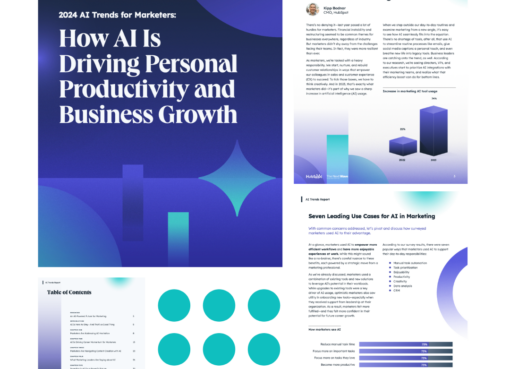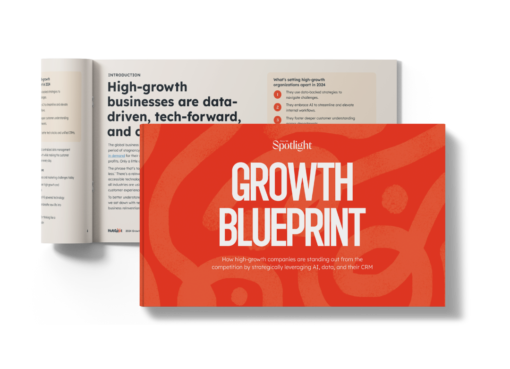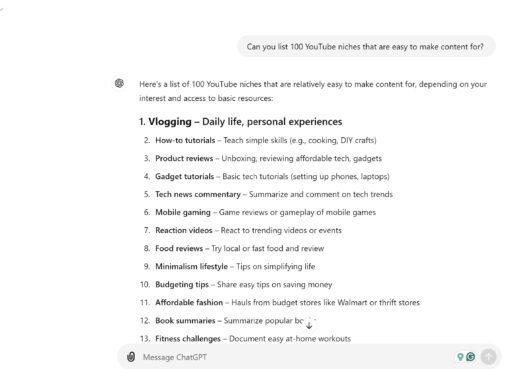Here’s what a typical Monday morning looks like for me: I open my computer and see a few Slack messages about a campaign I’m launching on Tuesday.
After answering those, I check my inbox and find I’ve been tagged in some slides for that same campaign. Once I’m done responding, I hop on a Zoom call with stakeholders to discuss last-minute tasks for launch. A few ask me to send a follow-up email, so I do. Others prefer to be tagged in the relevant Google Docs, so I take care of that, too.
![Download Now: The Annual State of Artificial Intelligence in 2024 [Free Report]](https://no-cache.hubspot.com/cta/default/53/b72f2b25-8cc9-4642-9a1b-1e675d3d273b.png)
Suddenly, it’s 1 p.m., and I’ve barely touched my to-do list. My entire morning has been spent jumping between messaging apps, slide decks, and Zoom calls — just trying to keep everyone aligned.
Sound familiar?
I spoke with Jake Cerf, head of corporate marketing at Asana, to untangle the biggest challenges most teams currently face when it comes to productivity — and how you can solve them.
What Teams Get Wrong When It Comes to Productivity
Jake empathizes with the chaos that can ensue when you don’t focus on creating efficient processes for team-wide productivity.
“It can get chaotic,” he told me, adding, “Before I joined Asana, I reflected back on how I spent my time coordinating with folks — and it was a mess. We would be on email, Slack, and Google Docs and Slides. And you never really knew who was doing what, and when, and it was too easy to lose sight of the objective we were all after.”
Which sounds painfully relatable — especially, if we also pair this with the time we spend on meetings. According to an analysis by Flowtrace, the average employee spent 392 hours on meetings in 2024 (which translates to a full 16 days).
Fortunately, Jake shared some tried-and-true tips with me for cleaning up your team’s processes and creating more scalable options to improve cross-functional collaboration.
1. Each team leader needs to know how their work ladders up to corporate objectives — and they need to make it clear in their workflows.
I always want to know how my work connects to broader strategic initiatives — and so do most other people. They want to feel seen, valued, and know they are making an impact.
So much of a leader’s job is about making sure people are working on the right priorities and aligning to goals that move the needle. Yet, according to Slingshot, over 80% of employees don’t know what they’re working toward, which hurts both productivity and motivation.
That’s what makes a product like Asana so crucial. Jake has an easy time ensuring he isn’t micromanaging his team on specific tasks. That’s because in Asana he can see how each sub-task his team is responsible for ladders up to the company’s key objectives for the year.
Additionally, to solve for conflicting cross-department goals, I think it can be helpful to use one centralized productivity tool that highlights the top-down priorities for the company.
“As a leader, so much of our job is making sure people are working on the right things, helping unblock team members and enabling them to have a North star. It’s good for productivity because when folks feel like they’re working on things that matter, they do better work,” Jake says.
He adds, “You don’t have to be as in-the-weeds on the details. You can tell team members the what and the why, and they can figure the rest out. But being clear about big picture objectives unlocks productivity up, down, and across the organization.”
If you’re dealing with productivity issues, I suggest you start by ensuring each leader is aligned on the major company objectives for 2025 — and then task them with demonstrating how all of their team’s projects ladder up to that ultimate goal. If a task doesn’t fit, it’s time to consider re-focusing on the activities that do.
2. Assign your AI a “role” to uplevel your team’s productivity.
A 2024 survey by Tech.co found that businesses using AI tools extensively are seeing a 72% boost in productivity — pretty impressive, right?
There’s been plenty of conversation surrounding AI over the past few years, but people are still skeptical about the improvements it can make to their daily lives.
At the same time, however, certain professionals are now strongly relying on it to boost their productivity. Our 2025 survey on AI use among marketers worldwide found that 66% use it in their work. In the U.S. alone, this figure is even higher, reaching 74%. I think this explains Jake’s observation that AI has proven much more useful as a teammate rather than just a tool.
“My life changed drastically when I stopped prompting AI with generic requests like, ‘Please write this blog post,’ and instead honed in on who I wanted AI to be: ‘Please write this blog post as if you’re a tech writer at a large-scale SaaS company,’” Jake says.
Jake highly recommends assigning AI a “role” when leveraging AI for productivity.
“When teams are working on an important initiative, and you give each AI bot its own specific role, the output is much greater. Let’s say you’re writing a blog post — you can assign AI to be the editor, the fact-checker, or the content strategist,” says Jake.
I noticed these use cases when reviewing the responses to our 2025 State of AI in Marketing survey. Over 46% of marketers say they use AI as a researcher and for idea generation, while nearly 37% ask it to create a rough draft and build upon it themselves.
Jake also adds, “If you use tools like Asana, you’ll have access to AI that is one of the world’s greatest project managers. It can help you unblock issues and triage requests and make sure people are working on the right things.”
Ideally, the productivity tools you leverage already have AI capabilities built in. If not, look into which plug-ins or external tools you might use to increase efficiency.
3. Leverage AI to minimize busywork.
The antithesis of productivity is busywork. Recent studies show that office workers dedicate over 50% of their time to repetitive tasks, such as manual data entry and document creation.
If your team is bogged down by menial tasks, they likely don’t have the energy or time to focus on the big picture objectives that account for most of your team’s impact.
That’s a major roadblock — and one that can be solved with AI.
Jake offers the example of repurposing content as one opportunity for increased productivity. He says, “With AI, you can take a keynote presentation and ask AI to draft a blog post on the keynote. Or, you can take your keynote script and ask AI to design the presentation itself.”
He continues, “Finding new avenues to increase the longevity and impact of your content is one of the best ways to use AI.”
I Built An App With Claude 3.5 In Less Than 10 Hours
Additionally, Jake encourages marketers to leverage AI for content creation, as well as more creative outputs like manager reviews, sending feedback to teammates, riffing on ideas, role-playing scenarios, and more.
The majority of marketers who responded in our 2025 State of AI Marketing report use AI to ideate content and for basic research and outlining. However, only 4.18% use it to write entire content pieces — highlighting that most marketers see AI as a tool for support rather than full automation.
4. Have one centralized workspace for teams to work cross-functionally.
Finally, none of this is possible without creating a strong foundation for efficient, scalable cross-functional collaboration.
Remember those slide decks, and Google Docs, and Slack messages, and emails I mentioned earlier? Why not try to put more of your work in one centralized place?
“Productivity comes down to visibility,” Jake says. “Your team needs to be rowing in the same direction. Having a tool like Asana has been super helpful for our team productivity — you need a place where you can set your goals and then track all of the team’s work and hold people accountable.”
“Plus,” he adds, “It’s crucial you use the same centralized workspace when you’re setting strategy so that you have alignment around the tasks and initiatives that will help you achieve your goals.”
Productive Workflows Level Up Teams
Jumping between 30 different messaging and content creation apps and tools isn’t conducive to long-term productivity. As a leader, it’s your job to figure out how to centralize as much as you can in one place — and then use AI to supercharge it all.
To learn more about how HubSpot and Asana are helping marketers drive productivity, take a look at the HubSpot and Asana integration available today.
Editor’s note: This post was originally published in August 2024 and has been updated for comprehensiveness.






![New Marketing Jobs That Focus on AI [Data + Examples] new-marketing-jobs-that-focus-on-ai-[data-+-examples]](https://blog.contentkrush.com/wp-content/uploads/2024/09/140151-new-marketing-jobs-that-focus-on-ai-data-examples-510x369.webp)


![How Marketers Save Time and Make Data-Backed Decisions with AI Reporting [+ Expert Insights] how-marketers-save-time-and-make-data-backed-decisions-with-ai-reporting-[+-expert-insights]](https://blog.contentkrush.com/wp-content/uploads/2024/10/140392-how-marketers-save-time-and-make-data-backed-decisions-with-ai-reporting-expert-insights-510x369.png)


![14 best AI SEO tools & how I use them [new data] 14-best-ai-seo-tools-&-how-i-use-them-[new-data]](https://blog.contentkrush.com/wp-content/uploads/2025/07/141833-14-best-ai-seo-tools-how-i-use-them-new-data-510x369.png)
![AI marketing campaigns only a bot could launch & which tools pitch the best ones [product test] ai-marketing-campaigns-only-a-bot-could-launch-&-which-tools-pitch-the-best-ones-[product-test]](https://blog.contentkrush.com/wp-content/uploads/2025/06/141665-ai-marketing-campaigns-only-a-bot-could-launch-which-tools-pitch-the-best-ones-product-test-510x369.webp)

![Which AI Tool Writes the Best Marketing Copy? [I Tested Several Different Tools] which-ai-tool-writes-the-best-marketing-copy?-[i-tested-several-different-tools]](https://blog.contentkrush.com/wp-content/uploads/2025/01/140763-which-ai-tool-writes-the-best-marketing-copy-i-tested-several-different-tools-510x369.webp)




![AI in content marketing: How creators and marketers are using AI to speed up & succeed [data] ai-in-content-marketing:-how-creators-and-marketers-are-using-ai-to-speed-up-&-succeed-[data]](https://blog.contentkrush.com/wp-content/uploads/2025/06/141627-ai-in-content-marketing-how-creators-and-marketers-are-using-ai-to-speed-up-succeed-data-510x369.webp)


![AI in Content Marketing: How Creators and Marketers are Using It in 2024 [Data] ai-in-content-marketing:-how-creators-and-marketers-are-using-it-in-2024-[data]](https://blog.contentkrush.com/wp-content/uploads/2024/09/140189-ai-in-content-marketing-how-creators-and-marketers-are-using-it-in-2024-data-510x369.webp)









Comment here